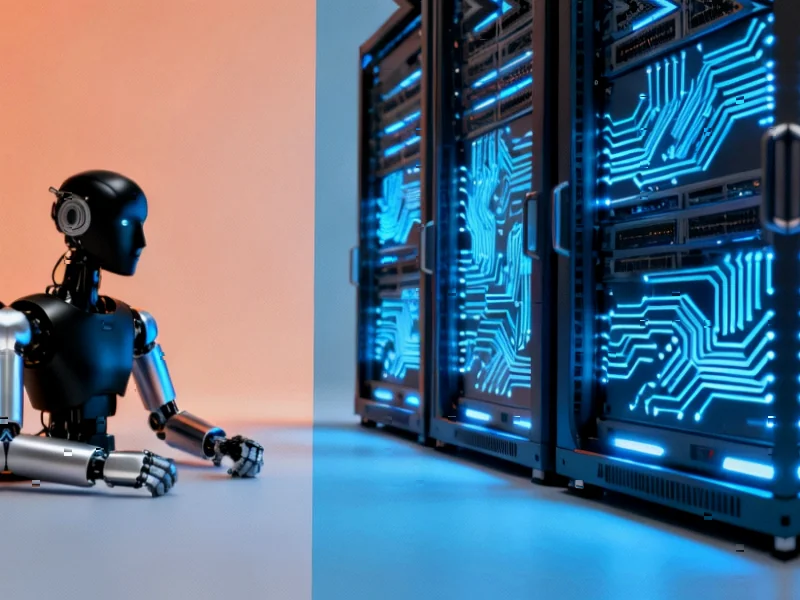According to Forbes, OpenAI’s Sora 2 short-form AI video generation app achieved one million downloads within five days of launch, demonstrating explosive consumer interest in prompt-to-video technology. The platform’s capabilities were showcased through Toys”R”Us creating a fully synthetic animated brand film that premiered at Cannes Lions 2024, representing a milestone in AI-generated storytelling. While digital platforms like YouTube and Google are rapidly integrating these tools, the phenomenon of “AI slop”—low-to-mid quality synthetic content—has emerged as a significant concern, potentially crowding out human-made media. The technology also shows promise in specialized applications like healthcare education and sports analytics through zero-shot learning capabilities that allow models to perform tasks they weren’t explicitly trained to do. As we stand at this technological inflection point, the implications extend far beyond simple content creation.
The Great Stakeholder Divide
The AI video revolution creates clear winners and losers across the content ecosystem. For enterprise marketers and large brands, this represents an unprecedented opportunity for hyper-personalized advertising at scale—imagine generating thousands of product demonstration variants tailored to individual search queries, locations, and demographics. The Toys”R”Us example demonstrates how major corporations can leverage this technology for high-production-value content without traditional animation studio costs. However, for individual creators, freelance videographers, and small production houses, this technology poses an existential threat. The economic reality is stark: when AI can generate “good enough” video content for a fraction of the cost and time, entire categories of creative professionals face displacement. This isn’t just about efficiency—it’s about the fundamental revaluation of video production skills that previously required years to master.
Global Content Factory Implications
The geographic redistribution of content creation represents one of the most underdiscussed aspects of this shift. When Forbes mentions individuals from developing countries creating AI content for U.S. audiences, they’re describing the early stages of a global content arbitrage economy. We’re witnessing the emergence of a new digital workforce that can produce volume-optimized content for Western markets without the traditional barriers of language, cultural context, or production resources. This creates troubling questions about cultural authenticity and the homogenization of visual media. When content is generated primarily for algorithmic engagement rather than cultural expression, we risk creating a global visual monoculture where local artistic traditions and storytelling methods get drowned out by universally optimized AI aesthetics.
Healthcare’s Quiet Revolution
While consumer applications grab headlines, the most transformative use cases may emerge in specialized fields like healthcare and education. The ability to generate personalized patient education materials—combining individual medical imagery with tailored explanations—represents a breakthrough in health communication. For patients with low health literacy or language barriers, AI-generated visual explanations could dramatically improve understanding and adherence to treatment plans. Similarly, in medical training, synthetic video could simulate rare conditions or complex procedures without requiring extensive real-world footage. The zero-shot learning capability means these models could potentially recognize and demonstrate medical scenarios they weren’t explicitly trained on, opening new frontiers in diagnostic support and medical education. The challenge will be ensuring these applications meet rigorous accuracy standards before clinical deployment.
The Governance Vacuum
Current regulatory frameworks are completely unprepared for the scale and sophistication of AI-generated video. The fabricated surveillance video of Sam Altman demonstrates how easily these tools can create convincing false narratives. Beyond deliberate misinformation, we face more subtle challenges around provenance, copyright, and algorithmic accountability. When AI systems generate content through zero-shot learning—creating videos of scenarios they weren’t explicitly trained on—attribution and responsibility become incredibly complex. Watermarking and metadata standards will be essential, but likely insufficient against sophisticated bad actors. The deeper challenge is that our current content moderation systems and legal frameworks were built for a world where creating convincing video required significant resources and expertise—assumptions that no longer hold true.
The Quality Paradox
We’re entering a period where technical capability will rapidly outpace our ability to discern quality. The “slop” phenomenon isn’t just about poorly executed content—it’s about content optimized for engagement metrics rather than human value. As these systems improve, we’ll face the paradox of technically proficient but creatively hollow content flooding distribution channels. The real risk isn’t that AI will replace all human creators, but that it will so thoroughly dominate attention economies that genuinely creative work becomes economically unsustainable. This creates a vicious cycle where platforms reward volume and engagement, AI excels at producing both, and human creators either adapt to creating AI-optimized content or struggle to reach audiences. The solution requires both technological interventions and a reconsideration of how we value and surface content in digital environments.
Are We Actually Ready?
The fundamental question isn’t about technological readiness—the capabilities are already here—but about societal preparedness. We lack the literacy, the regulatory frameworks, the ethical consensus, and the economic models to navigate this transition responsibly. The speed of adoption demonstrated by Sora 2’s million downloads in five days suggests consumer curiosity is outpacing our collective understanding of consequences. What’s needed isn’t slower innovation, but accelerated development of the social, legal, and educational systems that can help us harness this technology’s benefits while mitigating its risks. The companies driving this revolution have both an opportunity and responsibility to build these considerations into their development processes rather than treating them as afterthoughts.




